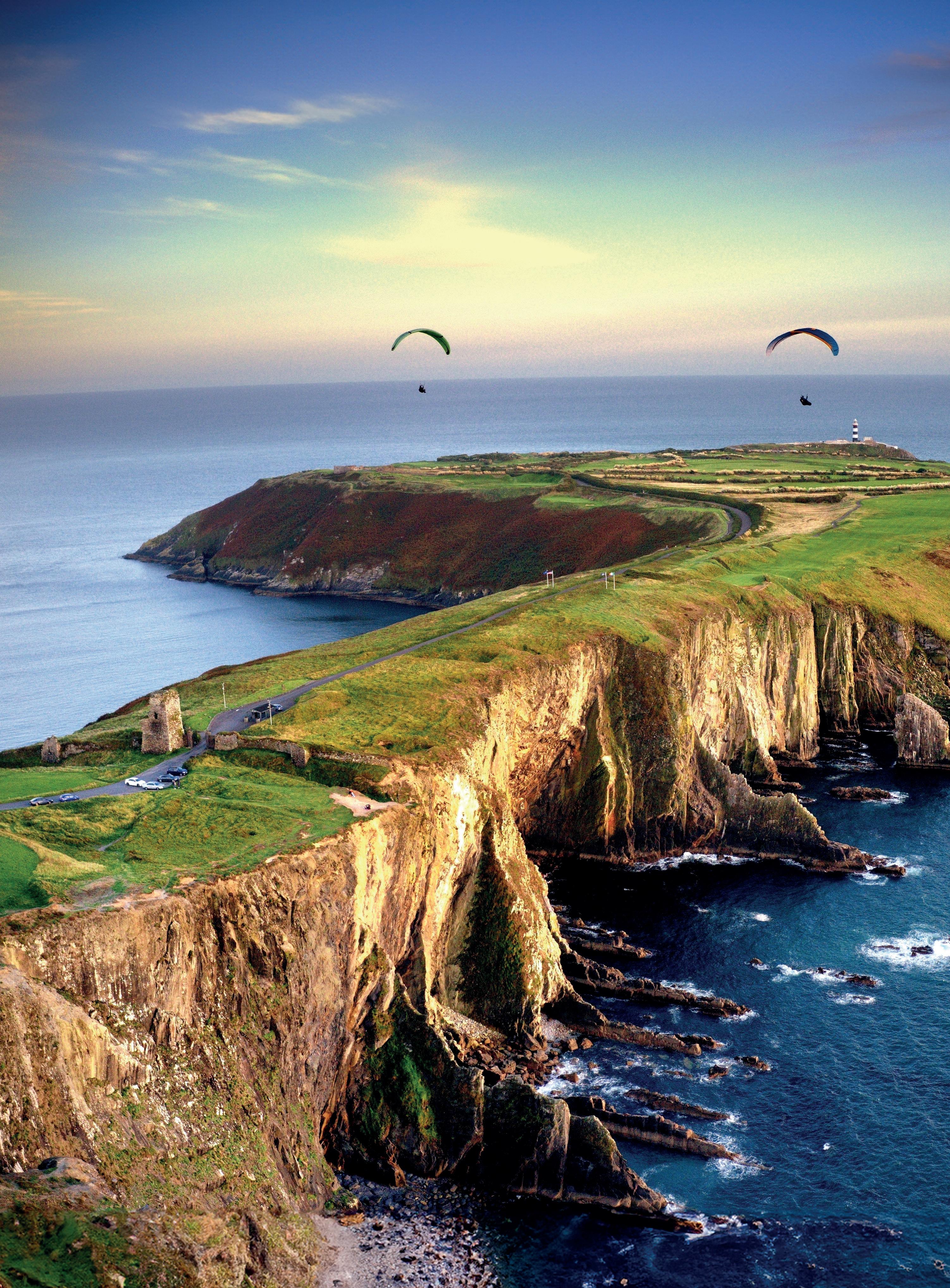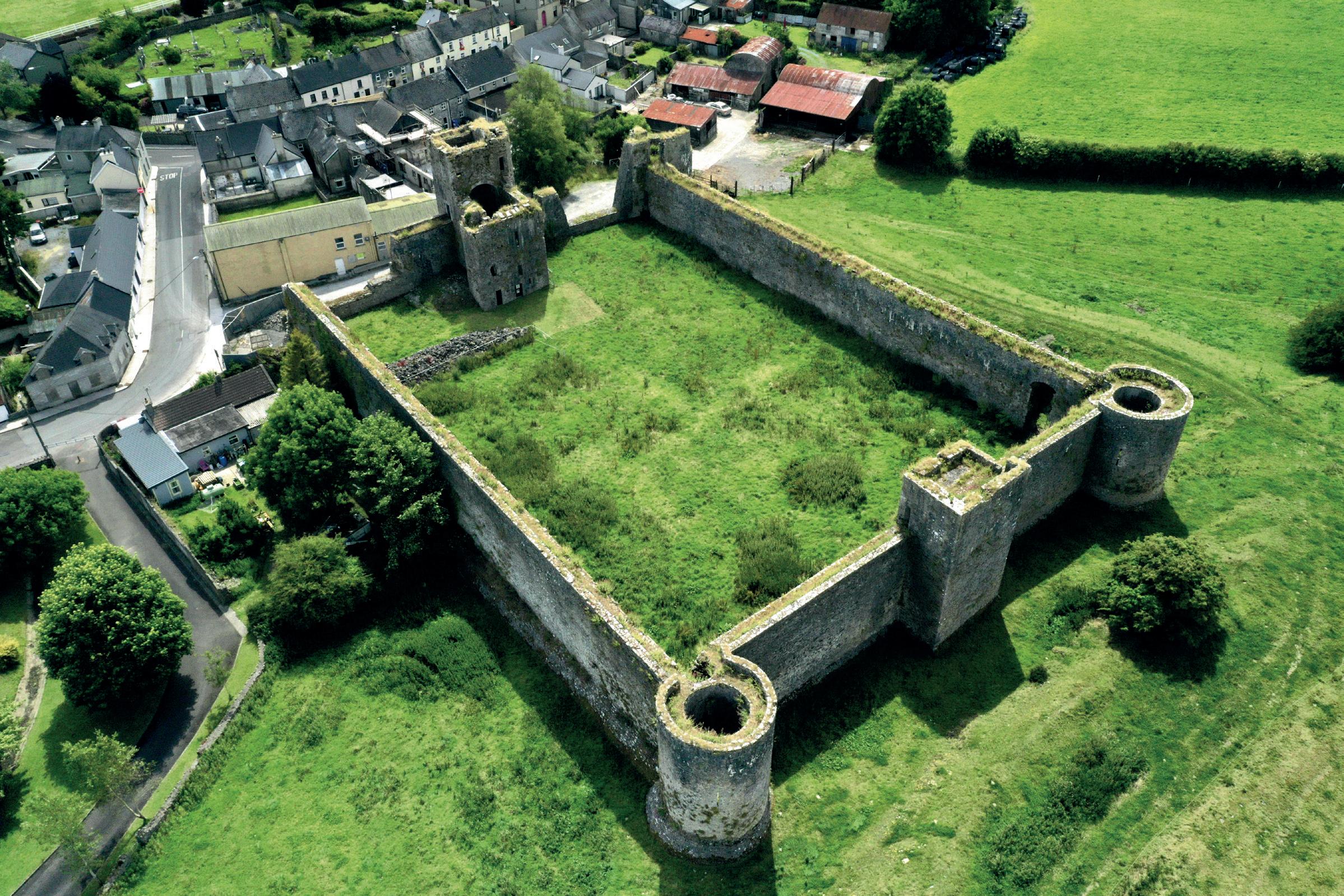CORK
The Beauty of the Rebel County

Michael Prior


Michael Prior
Michael Prior

MICHAEL PRIOR has been a photographer for over twenty-five years. He has travelled extensively in South Africa, Asia and India, but Cork – his native home – is his favourite place.
A former sailing, windsurfing and canoeing instructor, he surfs a couple of times a week, when time allows. He lives between Kinsale and Clonakilty with his wife and two children.
michaelpriorphotography.net
To my wonderful mother, Olive: thank you for all your help
First published 2025 by The O’Brien Press Ltd, 12 Terenure Road East, Rathgar, Dublin 6, D06 HD27, Ireland. Tel: +353 1 4923333; e-mail: books@obrien.ie; website: obrien.ie
The O’Brien Press is a member of Publishing Ireland.
ISBN: 978-1-78849-557-8
Text and photographs © Michael Prior 2025
The moral rights of the author have been asserted. Map design by Anú Design (www.anu-design.com)
Editing, design and layout © The O’Brien Press 2025
Cover and text design by Emma Byrne
All rights reserved. No part of this publication may be reproduced or utilised in any form or by any means, electronic or mechanical, including for text and data mining, training artificial intelligence systems, photocopying, recording or in any information storage and retrieval system, without permission in writing from the publisher.
8 7 6 5 4 3 2 1 29 28 27 26 25
Printed and bound by L&C Printing Group, Poland. The paper in this book is produced using pulp from managed forests.
To the best of our knowledge, this book complies in full with the requirements of the General Product Safety Regulation (GPSR). For further information and help with any safety queries, please contact us at productsafety@obrien.ie
Published in
Castletownbere
Allihies









C e l ti c S ea


County Cork, situated in the south of the country is, at nearly three thousand square miles, the largest county in Ireland, and, with a population of six hundred thousand, the country’s second most populated county after Dublin. The county’s landscape varies greatly: the southwest is known for its mountainous and rugged terrain and is one of Ireland’s main tourist destinations, while the rest of the county is rich in pastureland.
Cork’s coastline stretches for almost twelve hundred kilometres and is dotted with beautiful beaches, such as Garrylucas, Long Strand and Barleycove. Its many islands range from little gems such as Fastnet, with its iconic lighthouse, to larger, inhabited ones such Dursey, famed for having Ireland’s only cable car which connects it to the mainland, and the Irish-speaking Cape Clear. The Wild Atlantic Way starts in the historic town of Kinsale from where it winds its way west along the coastline.
Cork is renowned for its festivals dedicated to music, arts and food, both in the city and throughout the towns and villages, especially during the summer months. To mention just a few, Doneraile hosts a world-famous horse fair, Bantry a mussel festival and the West Cork Music festival, which draws people from far and wide. The county’s regattas include a vintage boat regatta in Baltimore.
As for me, I am a proud Corkman. I began my photography journey in a darkroom in the 1990s. I started off on 35mm film, developing and printing my photographs in my darkroom. In 1999, I travelled to South Africa with a backpack and fifty rolls of black-and-white film. It went well: I got some good wildlife and landscape shots while having a great adventure. The photographs were well received, and earned some awards. The following year I was off travelling again, this time spending three months in India and again with fifty rolls of black-and-white film, and I have been hooked ever since. For the next few years, I concentrated mainly on blackand-white, printing all my own photographs, as well as printing for other photographers. It was only when I changed to digital that I started working mostly in colour. Over the years, I have returned to Africa and Asia on many occasions and have been lucky enough to watch the sun rise over Mount Everest.
While I have seen many beautiful countries, for me Ireland is the prettiest, and from a more than slightly biased point of view, I believe Cork is the prettiest part of the country. I live between Kinsale and Clonakilty in west Cork with my beautiful wife and our two wonderful children. My gallery workshop is there and you are always welcome to visit.

Looking over north Cork from the Galtee Mountains.


Above: The farming village of Doneraile is probably best known for its connection with horse racing: in 1752, a wager was placed by two gentlemen on a four-mile race between the steeples of St John’s Church in Buttevant and St Mary’s in Doneraile, and the steeplechase was born. Opposite: Aerial view of Doneraile Court and its magnificent parklands. It was built in the seventeenth century by the St Leger family.



Opposite, top: Ballybeg Priory. This thirteenth-century priory is one of two Augustinian monasteries in Cork.
Opposite, bottom: Old friends catching up, outside Maureen’s in Buttevant.
Below: Liscarroll Castle. Built in the thirteenth century, it was once was Ireland’s third-largest castle.


Blarney Castle is one of Ireland’s top tourist attractions. At the top is the stone of eloquence, or Blarney Stone, which reputedly bestows the gift of the gab on those who kiss it.

Top: Carrigaphooca Castle. This ruined five-storey tower house, situated on a steep-sided outcrop overlooking the River Sullane near Macroom, was built in the mid-fifteenth century. In English, its name means ‘castle of the fairy’.
Right: The Nano Nagle statue marks the birthplace in Ballygriffin, Mallow, of the founder of the Presentation Sisters order. Nano Nagle (1718–84) championed Catholic education during the time of the Penal Laws.



Top: Old Mallow Castle. Now a picturesque ruin, this castle was built in the sixteenth century.
Bottom: Nineteenth-century Mallow Castle is a fine baronial mansion.
Opposite: The Clock House in Mallow. This beautiful building in the heart of the town was constructed in 1855. The clock tower was restored in 1995.


Top and opposite top: Two views of Blackwater Castle in Castletownroche. The main structure dates to the fifteenth century, while the tower was built in the twelfth century.
Opposite bottom: Castletownroche Mill. Constructed in 1828 on the site of an older mill, this building was renovated in the 1990s and is now a work hub for the local community.
